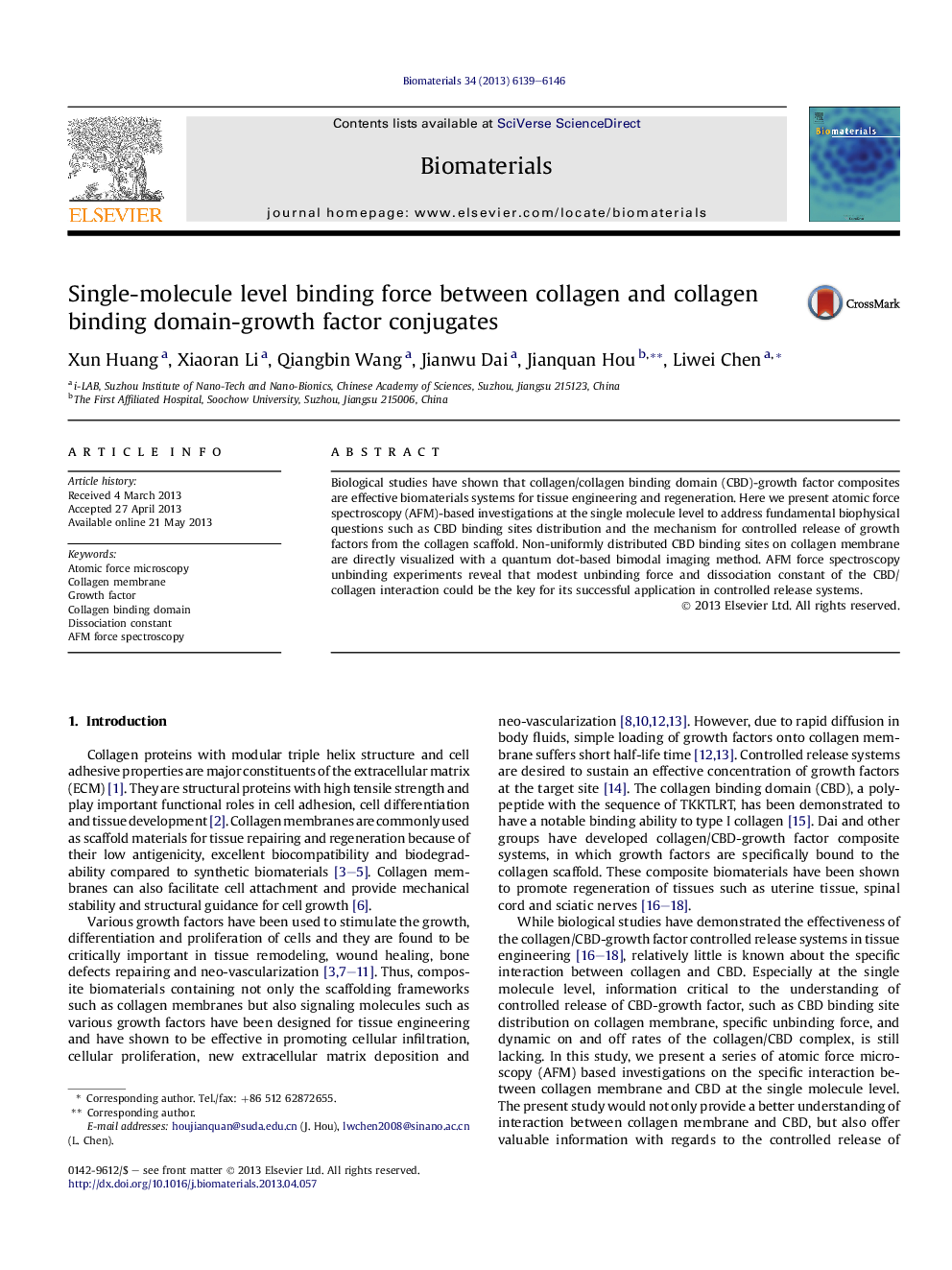| Article ID | Journal | Published Year | Pages | File Type |
|---|---|---|---|---|
| 6398 | Biomaterials | 2013 | 8 Pages |
Biological studies have shown that collagen/collagen binding domain (CBD)-growth factor composites are effective biomaterials systems for tissue engineering and regeneration. Here we present atomic force spectroscopy (AFM)-based investigations at the single molecule level to address fundamental biophysical questions such as CBD binding sites distribution and the mechanism for controlled release of growth factors from the collagen scaffold. Non-uniformly distributed CBD binding sites on collagen membrane are directly visualized with a quantum dot-based bimodal imaging method. AFM force spectroscopy unbinding experiments reveal that modest unbinding force and dissociation constant of the CBD/collagen interaction could be the key for its successful application in controlled release systems.
